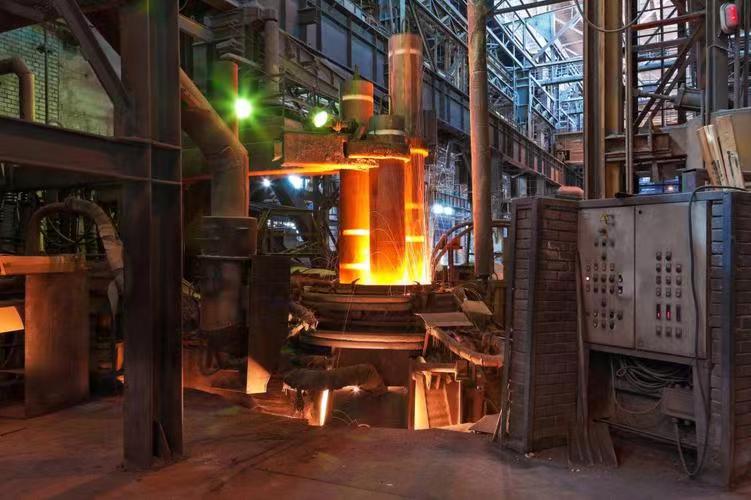Графит очень важен в промышленном производстве и повседневной жизни. Различные типы графита имеют разную плотность, и важно понимать факторы, влияющие на плотность графита, методы измерения и т.д., поскольку он имеет важное значение в промышленном производстве.
Оглавление
Toggle
Какова плотность различных видов графита?
Натуральный графит
- Чешуйчатый графит: обычно около 2,09 - 2,23 г/см³.
- Землистый графит (микрокристаллический графит): обычно около 2,0-2,2 г/см³.
Искусственный графит
– Изостатическое давление графита: высокая плотность, достигающая примерно 1,7-1,9 г/см³. Благодаря своим изотропным характеристикам, изостатический графит может достичь высокого уровня после специальной технологической обработки, которая помогает улучшить его свойства, такие как прочность, электропроводность и теплопроводность.
– Литой графит: обычно колеблется в пределах 1,6-1,85 г/см³. На плотность влияют такие факторы, как давление формования, сырье и связующие вещества, и плотность в этом диапазоне может удовлетворять основным требованиям различных сценариев применения, таких как механические уплотнения и электроды.
– Экструдированный графит: около 1,5 - 1,7 г/см³. В процессе экструзии расположение частиц и степень уплотнения сырья влияют на конечную плотность. Экструдированный графит в этом диапазоне плотности демонстрирует хорошие характеристики в таких областях применения, как электродные материалы и щетки.
Факторы, влияющие на плотность
1.Сырье:
Природа исходного материала графита может влиять на плотность конечных продуктов. Например, размер частиц, форма, чистота и т. д. сырья влияют на насыпную плотность и кристалличность графита.
2.Методы формовки:
Различные методы формования, такие как литье, экструзия, изостатическое прессование и т.д., будут оказывать влияние. Например, формование изостатическим прессованием позволяет достичь более высокой плотности графитовых изделий, поскольку этот метод позволяет равномерно прикладывать давление к графитовому материалу, тем самым уменьшая внутреннюю пористость.
3.Температура и время спекания:
В процессе спекания большое значение имеет контроль температуры и времени. Более высокая температура спекания и надлежащее время выдержки могут способствовать кристаллизации и сплавлению частиц графита, уменьшению пористости и, следовательно, увеличению плотности.
4.Пористость:
Пористость графита напрямую влияет на его плотность. Чем выше пористость, тем ниже плотность. Образование пор может быть связано с такими факторами, как характеристики исходного материала, выделение газов при подготовке и усадка при спекании.
5.Содержание примесей:
Если графит содержит больше примесей, это нарушает целостность и компактность его кристаллической структуры, что приводит к снижению плотности.
6.Степень графитизации:
Чем выше степень графитизации, тем полнее кристаллическая структура графита, и соответственно увеличивается его плотность.
Методы измерения плотности графита
1. Принцип Архимеда (метод дренажа).
Согласно принципу Архимеда, сила плавучести, которую испытывает объект в жидкости, равна весу, который он вытесняет из жидкости. Измерив вес графита в воздухе и его вес в воде (плавучесть), можно рассчитать объем графита. Затем, соединив его с массой, можно получить результат.
2. Пикнометрический метод
Измерив массу известного объема пикнометра, когда он заполнен жидкостью (например, водой), и массу, оставшуюся после выливания жидкости, можно рассчитать объем образца графита, а значит, и плотность.
3. Метод прямого измерения (для графитовых образцов правильной формы)
Для графитовых образцов правильной формы (например, кубов, кубоидов, цилиндров и т.д.) можно непосредственно измерить размер и рассчитать объем. Затем можно рассчитать плотность в сочетании с массой.
Сравнение плотности графита и углеродных материалов того же типа
Активированный уголь VS Графит
Активированный уголь - это углеродный материал с высокопористой структурой. Благодаря большому количеству пор плотность активированного угля относительно низкая, обычно около 0,5-0,9 г/см³. Напротив, графит гораздо плотнее активированного угля.
Алмаз VS графит
При комнатной температуре и давлении плотность алмаза составляет около 3,5 - 3,53 г/см³. Таким образом, плотность алмаза больше, чем у графита.
Углеродное волокно VS графит
Плотность углеродного волокна обычно составляет от 1,7 до 2,2 г/см³, но ее значение зависит от типа волокна и процесса подготовки. Поэтому графит частично перекрывает углеродное волокно в диапазоне плотностей.
Углеродные нанотрубки VS графит
Углеродные нанотрубки представляют собой трубчатый углеродный материал, плотность которого зависит от таких факторов, как диаметр трубки, толщина ее стенок и т. д. Плотность одностенных углеродных нанотрубок составляет около 1,3-1,4 г/см³. Графит плотнее углеродных нанотрубок.
Значение плотности графита в промышленном производстве
Оценка производительности: Плотность графита тесно связана с его физическими свойствами. Более высокая плотность обычно означает лучшую механическую прочность, износостойкость, электрика проводимость и т.д. Измеряя плотность графита, можно предварительно оценить его эффективность в конкретной области применения, что дает основу для выбора подходящего графитового материала.
Контроль качества: В процессе производства графитовых изделий плотность является важным показателем качества. Контролируя параметры производственного процесса, чтобы обеспечить достижение графитовым изделием ожидаемого диапазона плотности, можно гарантировать стабильность качества и постоянство продукта. Продукты с неудовлетворительной плотностью могут повлиять на их производительность и долговечность в эксплуатации.
Заключение
Таким образом, плотность графита является важнейшим фактором, определяющим его механические свойства и, соответственно, область применения в промышленности. По мере того как расширяются возможности его применения в различных отраслях, его значимость в промышленном ландшафте продолжает расти.



